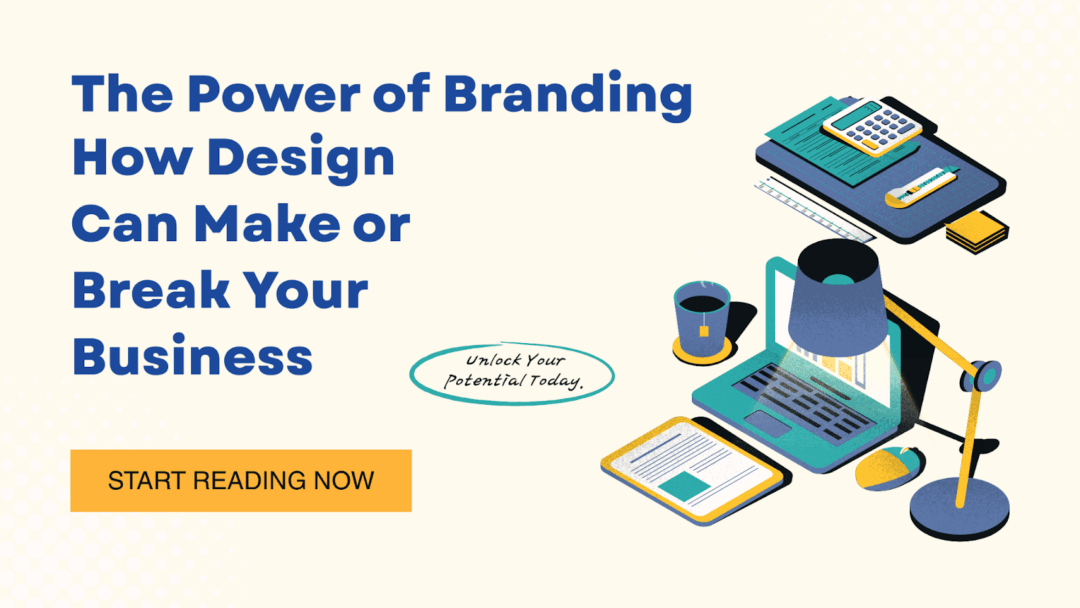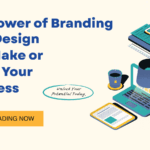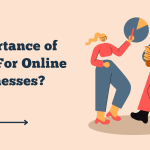The power of branding is a transformative force in the business landscape, enabling companies to build a strong brand identity that resonates with their target audience. Effective branding strategies leverage brand equity and enhance brand recognition, creating a compelling brand image that differentiates a product or service in a crowded marketplace. By communicating a unique value proposition and aligning with brand values, businesses can foster trust and loyalty among their customer base.
A strong brand not only drives revenue growth but also cultivates a loyal customer base through emotional connections and consistent brand experiences. The key elements of branding, such as visual identity and brand positioning, play crucial roles in establishing a robust brand that can withstand the test of time.
Great branding efforts focus on creating a distinctive identity that resonates with consumers, ultimately driving business expansion and shareholder value. In a world where bad branding can lead to missed opportunities, investing in your brand becomes essential for long-term success and market value. By harnessing the true power of branding, businesses can create brand stories that captivate their audience and build a premium pricing strategy backed by strong brand loyalty.
Ultimately, the impact of branding is profound, influencing consumer behavior and shaping perceptions. A well-crafted brand not only enhances visibility but also establishes a powerful brand presence that communicates the essence of the business. Through strategic branding, companies can ensure that their message aligns with their values, creating a compelling brand identity that stands out and resonates with consumers.
Companies with strong brand identity design generate 23% more revenue than their competitors with weak branding. Yet thousands of American businesses still treat branding as an afterthought, slapping together a quick logo and calling it a day. Here’s the uncomfortable truth: your brand isn’t just your logo or color scheme. It’s the entire emotional experience customers have with your business, and if you’re getting it wrong, you’re literally leaving money on the table. Let me show you exactly how design can either propel your business to new heights or quietly sabotage every marketing dollar you spend.
Why Brand Identity Design Actually Matters (More Than You Think)
I’ve watched countless startups pour thousands into Facebook ads and Google campaigns, only to wonder why their conversion rates remain abysmal. The answer? Their brand identity design was working against them. When customers land on your website or see your social media, they’re making split-second judgments about your credibility, professionalism, and whether you’re worth their time.
Research from the Design Management Institute shows that design-led companies outperformed the S&P 500 by 219% over ten years. That’s not a coincidence, that’s the tangible importance of branding in business manifesting in real financial results.
Think about the brands you trust most. Apple. Nike. Coca-Cola. What do they have in common? Absolutely ruthless consistency in their visual identity. You could spot their products from across a room without seeing a single word. That’s not accidental, it’s the result of a strategic visual branding strategy that’s been refined over decades.
The Real Cost of Bad Branding
Here’s what weak branding actually costs American businesses:
- 68% of customers won’t return after one poor brand experience
- Inconsistent branding can reduce revenue by up to 23%
- 77% of B2B marketing leaders say branding is critical to growth
- Companies lose an average of $1.2 million annually due to brand inconsistency
These aren’t just numbers; they represent real businesses that couldn’t figure out why their growth stagnated despite having great products.
The Psychology Behind Visual Branding Strategy
When you understand how branding works at a psychological level, everything changes. Humans process visual information 60,000 times faster than text. That means your visual branding strategy is communicating with potential customers before they’ve read a single word on your website.
Colors trigger specific emotional responses. Blue builds trust (why do you think Facebook, LinkedIn, and Twitter all use it?). Red creates urgency and excitement. Green suggests growth and sustainability. Your color choices aren’t just aesthetic preferences—they’re psychological triggers that influence purchasing decisions.
But here’s where most businesses mess up: they choose colors they personally like rather than colors that resonate with their target audience. I’ve seen tech startups use playful pastels when their B2B clients expect serious, professional navy and gray. The disconnect creates subconscious friction that kills conversions.
Logo Design Impact: Your First Impression Matters
Your logo isn’t just a pretty picture; it’s often the first tangible interaction someone has with your business. The logo design impact on customer perception is staggering. Research shows it takes only 0.05 seconds for users to form an opinion about your website, and your logo plays a massive role in that judgment.
Look at successful companies across the United States, from Silicon Valley tech giants to Main Street businesses. The ones thriving long-term have logos that are:
Simple and Memorable: Think about Target’s bullseye or McDonald’s golden arches. You remember them instantly because they’re not cluttered with unnecessary details.
Scalable Across Platforms: A great logo works whether it’s on a billboard in Times Square or a tiny mobile app icon. Bad logos fall apart when you shrink them down.
Relevant to Your Industry: A law firm shouldn’t have a cartoon mascot, and a children’s toy company shouldn’t look like an investment bank. Context matters enormously.
Brand Consistency in Marketing: The Make-or-Break Factor
Brand consistency in marketing is where I see businesses fail most often. They’ll have a sleek website, then post grainy photos on Instagram with completely different fonts. Or they’ll nail their visual identity but switch up their messaging tone across different platforms.
Consistent brand presentation across all platforms increases revenue by up to 33%. Yet according to Lucidpress, only 10% of organizations maintain consistent branding across all channels. That’s a massive opportunity for businesses willing to do the work.
Building Consistency Across Touchpoints
Every interaction point is a branding opportunity:
Your Website: This is your digital storefront. American consumers expect fast-loading, mobile-optimized sites with clear navigation. Your branding should reinforce trust at every scroll.
Social Media Presence: Each platform has different norms, but your core visual identity should remain consistent. LinkedIn posts can be more professional while Instagram allows for creativity but both should feel unmistakably like your brand.
Email Marketing: From your newsletter design to your email signature, everything communicates brand values. Generic, poorly formatted emails suggest your business is equally disorganized.
Physical Collateral: Business cards, packaging, signage if you have physical touchpoints, they need to match your digital presence. Inconsistency makes customers question your attention to detail.
Creating Emotional Connection in Branding
Here’s something most marketing textbooks won’t tell you: people don’t buy products, they buy feelings. The most powerful brands in America aren’t selling features; they’re selling emotional experiences. That’s the real secret of emotional connection in branding.
Nike doesn’t sell shoes; they sell the feeling of athletic achievement. Apple doesn’t sell computers; they sell creative empowerment and belonging to an innovative community. Patagonia doesn’t sell outdoor gear; they sell environmental consciousness and adventure.
What feeling does your brand evoke? If you don’t have a clear answer, you’re missing the entire point of strategic branding.
The Trust Factor: Branding and Customer Trust
Branding and customer trust are inseparably linked. In an era where American consumers are increasingly skeptical of corporate messaging, authentic branding becomes your most valuable asset.
Edelman’s Trust Barometer consistently shows that brand trust influences purchasing decisions more than price or product features for millions of Americans. When customers trust your brand, they:
- Pay premium prices without hesitation
- Defend you during PR crises
- Recommend you to friends and family
- Give you second chances when mistakes happen
- Choose you over cheaper competitors
Trust isn’t built overnight. It’s earned through consistent visual identity, reliable messaging, transparent communication, and delivering on promises. Every touchpoint either builds or erodes trust there’s no neutral ground.
Practical Steps to Transform Your Brand Identity Design
Let’s get tactical. You understand why branding matters, but how do you actually implement this for your business? Here’s the framework I use with clients across the United States:
Step 1: Define Your Brand Foundation (Week 1-2)
Before touching design software, answer these questions honestly:
- What problem do you solve better than anyone else?
- Who exactly is your ideal customer? (Be specific demographics, psychographics, pain points)
- What three words should people associate with your brand?
- What makes you genuinely different from competitors?
Write this down. Everything that follows builds on these answers.
Step 2: Develop Your Visual Identity System (Week 3-4)
Color Palette: Choose 2-3 primary colors and 2-3 accent colors. Document exact hex codes. Research what these colors psychologically communicate and ensure alignment with your brand personality.
Typography: Select one font for headers and one for body text. Stick with them religiously. Professional brands don’t use 15 different fonts across materials.
Imagery Style: Decide on photography style, illustration approach, or graphic elements. Stock photos can work, but they need a consistent filter or treatment.
Logo Variations: You need a primary logo, a simplified version for small applications, and potentially a logomark (symbol only). Test them at various sizes.
Step 3: Create Brand Guidelines (Week 5)
Document everything in a simple PDF. Include:
- Logo usage rules (spacing, minimum sizes, what NOT to do)
- Color specifications with usage guidance
- Typography hierarchy and pairing rules
- Image style examples
- Voice and tone guidelines
- Real-world application examples
Share this with every team member, contractor, and agency you work with.
Step 4: Audit and Update All Touchpoints (Week 6-8)
Go through every single brand touchpoint systematically:
- Website redesign or updates
- Social media profile optimization
- Email template creation
- Business card and letterhead updates
- Presentation template development
- Packaging redesign if applicable
Yes, this is time-consuming. That’s why most businesses never do it properly—and why they struggle with brand recognition.
Step 5: Maintain Consistency Ruthlessly (Ongoing)
Set calendar reminders to audit your branding quarterly. As your business evolves, your brand can evolve too but evolution should be intentional and strategic, not accidental drift.
Tools and Resources for Building Strong Brands
You don’t need a Fortune 500 budget to create professional branding. Here are resources American businesses use successfully:
Design Tools: Figma, Adobe Creative Suite, or Canva Pro for creating visual assets Color Palette Generators: Coolors, Adobe Color for finding harmonious combinations Font Resources: Google Fonts, Adobe Fonts for professional typography Brand Strategy: Brand deck templates from companies like Notion or Miro Consistency Management: Digital asset management platforms like Brandfolder or Frontify
The tools matter less than the strategic thinking behind them. I’ve seen brilliant brands created with free tools and terrible brands emerge from expensive agency work. Execution matters, but strategy matters more.
Real-World Examples: Branding Success Stories
Let’s look at how importance of branding in business manifests in real American success stories:
Warby Parker: Disrupted the eyewear industry not with better glasses, but with better branding. Their approachable, socially conscious brand identity resonated with millennials tired of traditional optical retailers. They built trust through consistent visual identity and transparent business practices.
Glossier: Transformed from a beauty blog into a billion-dollar brand through community-focused branding. Their millennial-pink aesthetic and authentic voice created emotional connections that traditional beauty brands couldn’t replicate.
Mailchimp: Turned email marketing software—typically boring B2B territory—into a quirky, memorable brand. Their distinctive illustration style and friendly tone differentiate them in a crowded market.
Notice the pattern? None of these companies compete primarily on price or features. They win through distinctive, consistent brand identity design that creates emotional resonance.
Frequently Asked Questions
Q: How much should a small business invest in brand identity design?
A: For small American businesses, expect to invest $2,000-$10,000 for professional branding, depending on complexity. However, the long-term ROI typically exceeds 300% within two years through increased customer trust and premium pricing capability. DIY approaches work for solopreneurs but hiring professionals becomes essential as you scale.
Q: How long does it take to see results from improved branding?
A: Brand perception shifts typically show measurable results within 3-6 months of consistent implementation. Initial changes in customer engagement and inquiries often appear within 4-6 weeks, but deep brand equity building requires 1-2 years of sustained effort.
Q: Can I change my brand identity if my current one isn’t working?
A: Absolutely. Rebranding is common and sometimes necessary for business growth. Companies like Old Spice, Domino’s, and Airbnb successfully transformed their brand identities. The key is strategic planning and consistent rollout across all touchpoints simultaneously.
Q: What’s the difference between brand identity and brand image?
A: Brand identity is what you intentionally create and control your logo, colors, messaging, and values. Brand image is how customers actually perceive you, which may differ from your intentions. Strong branding aligns these two as closely as possible.
Q: How do I maintain brand consistency with multiple team members?
A: Create comprehensive brand guidelines, implement approval workflows for public-facing materials, use digital asset management systems, conduct regular team training, and designate a brand champion who oversees consistency across all channels.
Q: Is logo design really that important for business success?
A: While a logo alone won’t make your business successful, it’s a critical component of overall brand identity. The logo design impact becomes significant when combined with consistent visual strategy, clear messaging, and customer experience. Think of it as your business’s face important for first impressions and recognition.
Q: Should my brand evolve with design trends or stay consistent?
A: Strike a balance between timelessness and relevance. Your core brand elements (values, mission, personality) should remain stable, but visual execution can evolve subtly to stay contemporary. Avoid trendy design fads that will look dated quickly, but don’t appear stuck in the past either.
The Bottom Line: Design Your Success
The importance of branding in business isn’t optional anymore, it’s fundamental to survival in competitive American markets. Your brand identity design communicates your value before customers read your website copy, hear your sales pitch, or try your product.
Strong branding doesn’t happen by accident. It requires strategic thinking, consistent execution, and ongoing refinement. But the businesses that get it right from scrappy startups in Austin to established corporations in New York see measurable results in customer loyalty, premium pricing power, and sustainable competitive advantage.
Your brand is either working for you or against you. There’s no neutral position. The question is: are you intentionally designing for success, or accidentally designing for mediocrity?
Start today. Audit your current brand touchpoints, identify inconsistencies, and begin the systematic work of building a brand that actually moves the needle for your business. Your future customers and your bottom line will thank you.







0 Comments